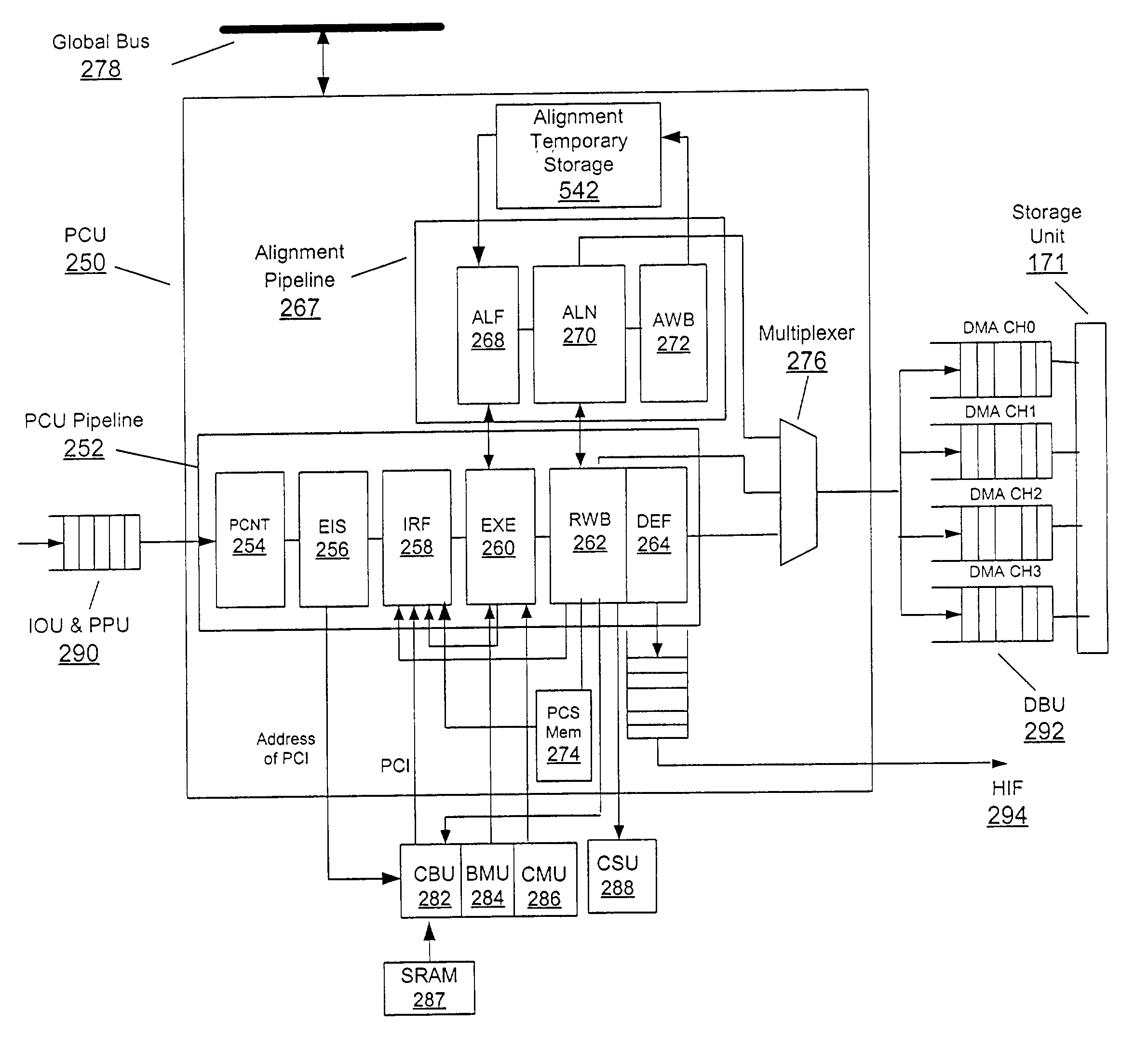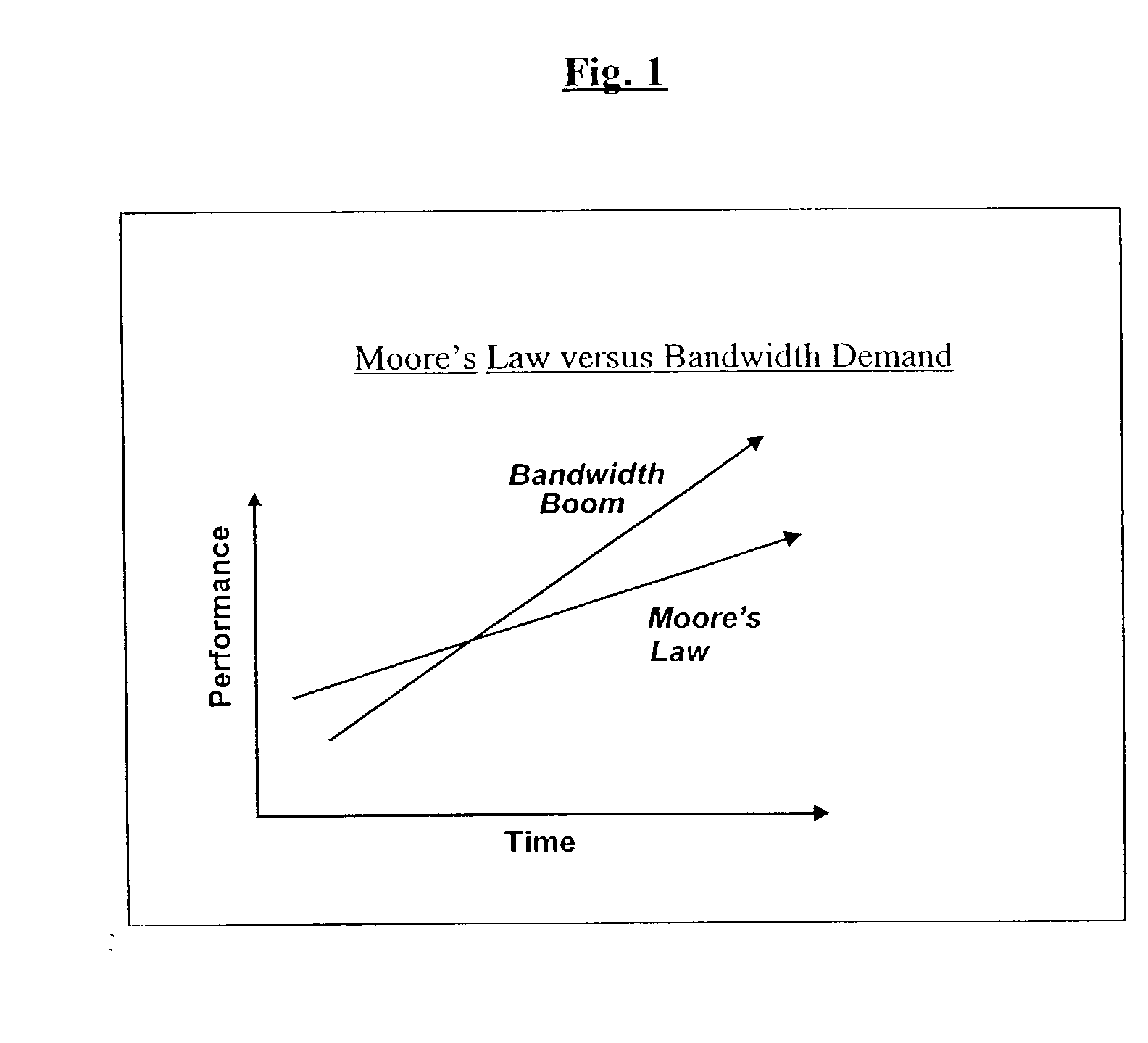Vertical instruction and data processing in a network processor architecture
a network processor and instruction technology, applied in data switching networks, storage and forward switching systems, instruments, etc., can solve the problems of network processor scaling, current network processor generation cannot scale by 4 times or 16 times, and the lifetime of today's network processors is shor
- Summary
- Abstract
- Description
- Claims
- Application Information
AI Technical Summary
Benefits of technology
Problems solved by technology
Method used
Image
Examples
Embodiment Construction
[0076]One embodiment of the present invention is a processor that optimally processes network traffic (this processor is hereinafter referred to as a “network processor”). In this embodiment, deterministic behavior is guaranteed by eliminating context switching. Also, multiple instruction single data (“MISD”) processors are used. As described below, these processors are configured to directly process the incoming data segments that are in a parallel format (e.g., the bits are parallel to each other in the vertical direction). In order to process the parallelized data segments, the pipeline has a large width. Very long instructions instruct the MISD processor to perform various functions on the data segments. This embodiment is able to guarantee and sustain a particular line rate performance regardless of incoming traffic patterns and network services contracted for by the subscriber. The line rate is guaranteed regardless of the number of processing functions executing in parallel.
[...
PUM
 Login to View More
Login to View More Abstract
Description
Claims
Application Information
 Login to View More
Login to View More - R&D
- Intellectual Property
- Life Sciences
- Materials
- Tech Scout
- Unparalleled Data Quality
- Higher Quality Content
- 60% Fewer Hallucinations
Browse by: Latest US Patents, China's latest patents, Technical Efficacy Thesaurus, Application Domain, Technology Topic, Popular Technical Reports.
© 2025 PatSnap. All rights reserved.Legal|Privacy policy|Modern Slavery Act Transparency Statement|Sitemap|About US| Contact US: help@patsnap.com



